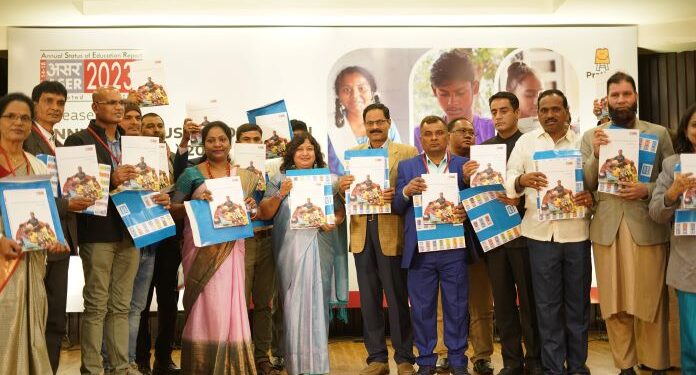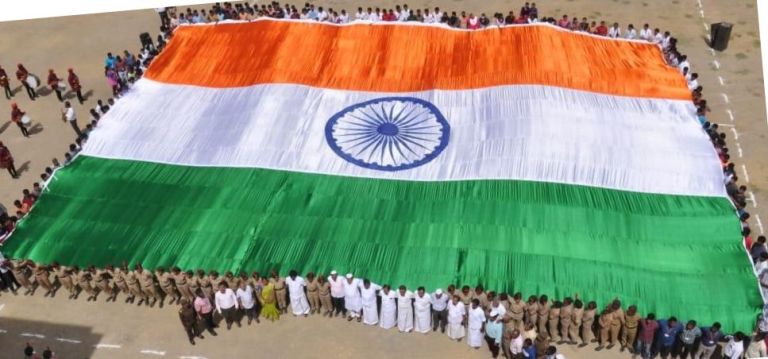The customary annual (now biannual) report by Mumbai-based nonprofit, Pratham, which reveals the status of education in rural areas through publication of a report popularly known as ASER was released this week (Jan17). As per the authors of the report, ASER 2023 ‘Beyond Basics’ survey was conducted in 28 districts across 26 states, reaching a total of 34,745 youth in the age group 14-18 years. One rural district has been surveyed in each major state, with the exception of Uttar Pradesh and Madhya Pradesh, where two rural districts have been surveyed.
The exploration of digital connectivity and skills in ASER 2023 had two components – a self-reported questionnaire capturing youths’ access to digital devices and their online habits, and an assessment of their digital skills – actually doing a set of tasks in front of the survey team using an available smartphone.
Repeating its discovery as in various previous editions, ASER 2023 finds about 25% of this age group still cannot read a Std II level text fluently in their regional language. More than half struggle with division (3-digit by 1-digit) problems. Only 43.3% of 14-18-year-olds are able to do such problems correctly. This skill is usually expected in Std III/IV.
A little over half can read sentences in English (57.3%). Of those who can read sentences in English, almost three quarters can tell their meanings (73.5%). Across enrollment categories, females (76%) do better than males (70.9%) in reading a Std II level text in their regional language. In contrast, males do better than their female counterparts in arithmetic and English reading. Surveyed youth were given five types of tasks. basic reading, math and English abilities; application of basic skills to everyday calculations; reading and understanding written instructions; and financial calculations that need to be done in real life.
“ASER reports have consistently pointed to the fact that many children in elementary school need urgent support for acquiring foundational skills like reading and basic arithmetic. With this year’s focus on an older age group, it is important to understand the level of basic skills among youth as well as their preparedness for tasks that go “beyond basics”,’” writes the report.
Overall, close to 50% youth can do other common calculations such as calculating time, adding weights and applying the unitary method. Males do better than females across all everyday calculations. Youth who have basic proficiency in arithmetic are likely to do better on everyday calculations.
Digital awareness and aptitude Since the COVID-19 pandemic, the world has become increasingly reliant on technology. ASER 2023 set out to explore the current scenario of digital awareness and ability among rural Indian youth.
Talking about digital access, ASER 2023 says close to 90% of all youth have a smartphone in the household and know how to use it. Of those who can use a smartphone, males (43.7%) are more than twice more likely to have their own smartphone than females (19.8%). Availability of a computer/laptop in the households is much lower, with only 9% having one at home. Youth who have a computer/laptop at home are much more likely to know how to use it (85%) than those who do not (33.9%).
In case of communication and online safety (Self-reported), half of all surveyed males have an email ID, compared to slightly under 30% of females. Among enrolled youth, the likelihood of having an email ID and having sent an email increases as the level of education goes up. Almost all youth (90.5%) report having used social media in the reference week, with a slightly higher proportion of males (93.4%) than females (87.8%) reporting doing so.
Of all youth who used social media, only about half are familiar with the online safety settings that were included in the survey. Males are more likely to know about these settings than females. Education and learning (Self-reported). Among the youth who can use a smartphone, two thirds report having used it for some education related activity during the reference week, such as watching online videos related to studies, solving doubts, or exchanging notes.
A quarter of youth who are not currently enrolled also report doing education related activities on their smartphone during the reference week. Slightly over a quarter of all youth report having used a smartphone to access online services such as making online payments, filling a form, paying a bill or booking a ticket. Males are more likely to have accessed at least one of these services (37.6%) than females (19%). Close to 80% of the youth report having used their smartphone to do an entertainment related activity, such as watching a movie or listening to music, during the reference week.
Interestingly, of youth who could bring a smartphone, about 80% can find a specific video on YouTube and among these, nearly 90% can share it with a friend. 70% youth can browse the internet to find the answer to a question and about two thirds can set an alarm for a specific time. A little over a third can use Google Maps to find the time taken to travel between two points. Across all tasks, males outperform females.
“As a country, we need to equip our young people adequately with the essential knowledge, skills, and opportunities they need to drive their own progress and that of their families and communities. India’s anticipated “demographic dividend” and “digital dividend” can achieve their full potential if this is done. The ASER report in 2017 first shone a spotlight on this age group. In the six years that have elapsed since then, the country has witnessed many changes. The ASER 2023 effort hopes to keep the focus on the age group 14-18 and continue the conversation about the way forward,” the report concludes.
https://twitter.com/asercentre/status/1747509038747632082













